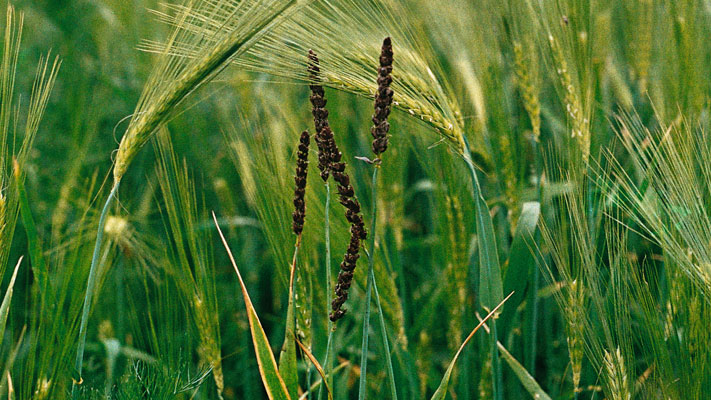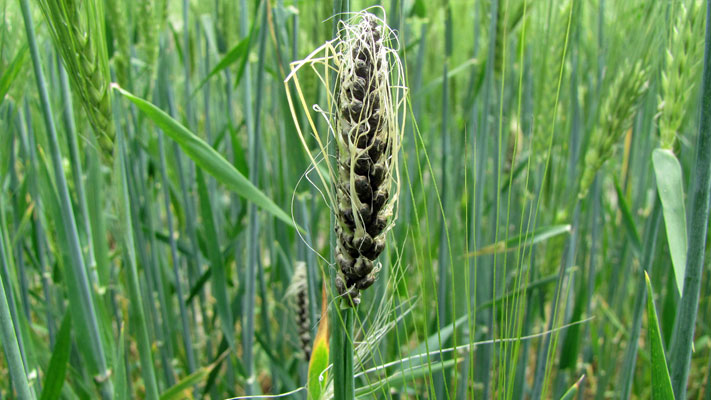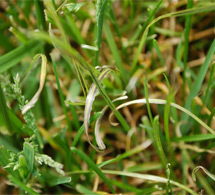Smut
Smut is a fungal disease affecting cereals crops in Australia. Commonly known as loose, flag or covered smut; hosts include wheat, barley and oats. The pathogens causing smut produce masses of soot-like spores in the leaves, grains and ears, causing significant reductions in both grain quality and yield. Each pathogen is specific to each type of cereal and therefore cannot be transferred between them. In Australia, there is a minimum to zero tolerance for grains contaminated with smut at grain receival points.
Refer to the links below for more detailed information on smut in each crop.

Description
Control
References
CropPro (Viewed Nov 2019), ‘Flag smut of wheat’, http://www.croppro.com.au/crop_disease_manual/ch04s05.php
CropPro (Viewed Nov 2019), ‘Loose smut of barley’, http://www.croppro.com.au/crop_disease_manual/ch04s07.php
CropPro (Viewed Nov 2019), ‘Loose smut of wheat’, http://www.croppro.com.au/crop_disease_manual/ch04s04.php
CropPro (Viewed Nov 2019), ‘Smut of oat’, http://www.croppro.com.au/crop_disease_manual/ch04s08.php
Holloway, G (2012), ‘Bunts and Smuts of Cereals’, Agriculture Victoria, http://agriculture.vic.gov.au/agriculture/pests-diseases-and-weeds/plant-diseases/grains-pulses-and-cereals/bunts-and-smuts-of-cereals
Thomas, G, Jayasena, K, Beard, C and Hills, A (2017), ‘Smut and bunt diseases of cereal – biology identification and management’, Department of Primary Industries and Regional Development (DPIRD), https://www.agric.wa.gov.au/print/node/326










